Best Time to Trade on IQ Option Based on Asset Type

My First Realisation: Timing Was Everything
When I started trading on IQ Option, I obsessed over strategies: indicators, candlestick patterns, and money management. I thought if I mastered these, profits would follow. But there was one detail I overlooked for months: timing.
One evening, I opened a EUR/USD trade during the Asian session. The chart was flat, barely moving. I waited… and waited. My option expired out of the money simply because nothing happened. A few hours later, when London markets opened, EUR/USD exploded with momentum, the exact kind of move I had been waiting for.
That night I realised something: you can have the right strategy, the right signal, and even the right psychology, but if you’re trading at the wrong time, you’re setting yourself up to lose.
This article is my breakdown of the best times to trade on IQ Option, tailored to each asset type. I’ve tested them myself, tracked results, and compared what worked versus what drained my balance. If you’re serious about trading smarter, not just harder, this will save you months of trial and error. Use your ideal sessions with tested 1-minute methods.
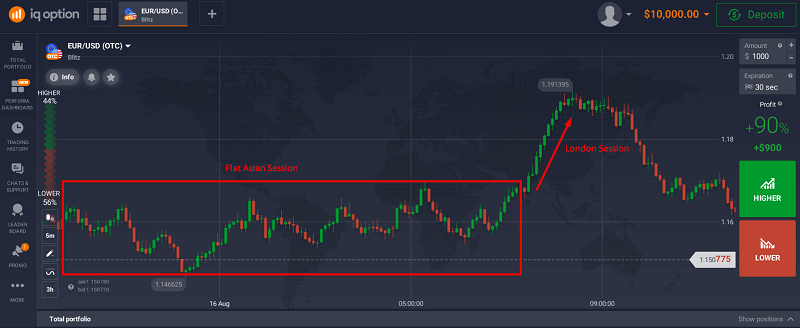
Forex on IQ Option: The Session Game
Forex is the bread and butter of IQ Option. It’s fast, liquid, and available almost 24/5. But not all hours are equal.
When I first traded forex on IQ Option, I’d jump in whenever I had free time, sometimes late at night, sometimes early morning. The problem? Different sessions behave differently.
- Asian Session (Tokyo): Pairs like AUD/JPY and NZD/JPY move more here, but EUR/USD and GBP/USD tend to stay flat.
- London Session: This is where the action begins. Liquidity surges, volatility spikes, and trends form. EUR/USD, GBP/USD, and USD/CHF are golden here.
- New York Session: Even more volume joins in, especially with USD pairs. If you like reversals or news-driven spikes, this is your time.
- Session Overlaps: London + New York overlap is the king of all windows. Moves are sharp, spreads are tight, and direction is clearer.
I tested EUR/USD trades over 30 days:
- During Asian hours, my win rate hovered around 38%.
- During the London overlap, it jumped to 63%.
That’s not a small difference; it was the line between losing and winning weeks.
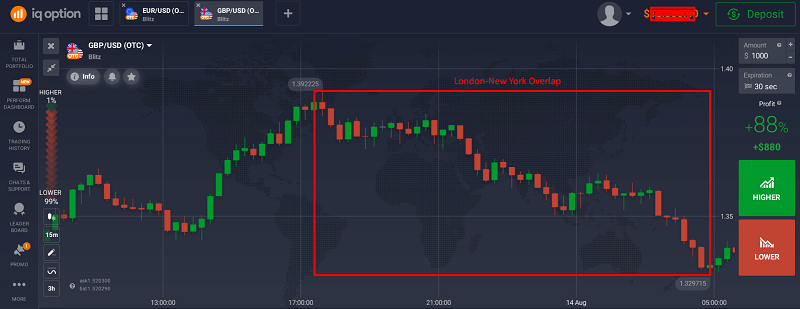
If you’re trading forex on IQ Option, don’t waste your energy in dead markets. Sign up, check the session overlap times in your local zone, and build your schedule around them.
Stocks on IQ Option: Market Hours Rule Everything
Stocks on IQ Option mirror the hours of the underlying exchanges. Unlike forex, which trades almost round-the-clock, stocks are tied to when the company’s home market is open.
When I first tried Apple trades on IQ Option, I did it mid-morning my time (in Asia). The chart barely moved, of course, it didn’t, because the Nasdaq wasn’t even open yet. I was staring at stale prices.
Here’s what I learned:
- US Stocks (Apple, Tesla, Amazon): Best during US market hours (9:30 AM – 4 PM EST). Pre-market and after-hours are thinner and less predictable.
- European Stocks (BMW, Daimler, Siemens): Move best during Frankfurt and London hours.
- Asian Stocks (Toyota, Sony): Perfect during the Tokyo session.
When you trade outside these windows, you’re mostly betting on delayed or low-liquidity moves. Inside the market hours, though, price responds to real news, earnings, and institutional activity. Some gaps appear at market opens, check gap strategies here.
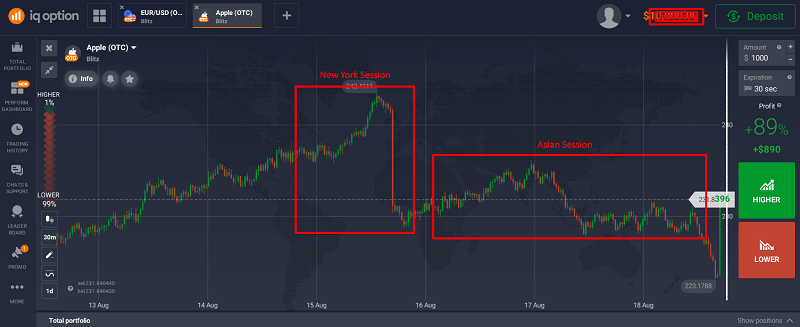
One time, I placed a trade on Tesla just as the market opened. Within 10 minutes, the price jumped 2%, all because of overnight news hitting traders at the bell. Compare that with me buying Tesla during the London session: dead, sideways, and eventually a losing option.
Cryptocurrencies on IQ Option: 24/7 Chaos
Crypto is the wild card. Unlike forex or stocks, crypto doesn’t sleep; it trades 24/7. That sounds exciting, but in practice, it’s tricky.
I once traded Bitcoin on a Saturday evening. The market was slow, volumes were low, and I got whipsawed out of position. Then I tried again on a Monday afternoon, right as Wall Street woke up. Suddenly, Bitcoin moved in sync with tech stocks, with clearer, stronger moves.
Here’s what I tracked:
- Weekdays (especially Monday–Thursday): Stronger moves, especially when aligned with stock market activity.
- Weekends: Choppy, unpredictable, often low volume.
- Time of Day: Crypto tends to mirror forex/stock hours. For example, Ethereum often moves harder during US tech stock volatility.
So while you can trade crypto at 3 AM on Sunday, I found my win rate doubled when I stuck to weekday overlaps.
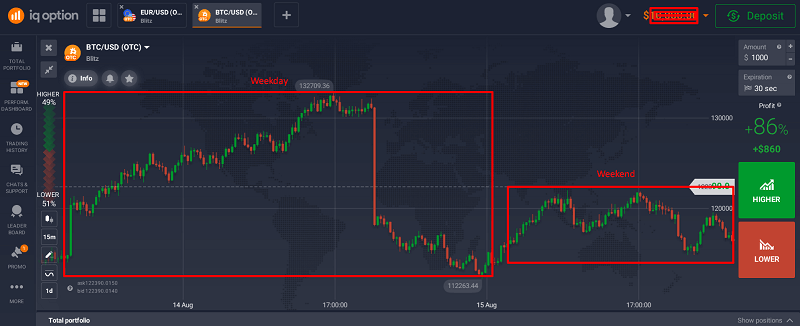
Thinking about crypto on IQ Option? Don’t treat it as a 24/7 casino. Trade it when the big money trades it, during overlap hours and weekdays.
Commodities: Timing With Global Demand
Commodities like gold, silver, and oil have their rhythm. At first, I thought gold was “always moving,” so I’d open random trades at night. Wrong.
Here’s what I noticed:
- Gold (XAU/USD): Moves strongest during the London and New York sessions.
- Oil (WTI, Brent): Explodes when US markets open, since oil demand and inventories are US-driven.
- Silver & Platinum: Best when London metals markets are active.
One of my biggest lessons came during a US crude oil inventory report. I wasn’t paying attention to the calendar, opened a short on oil, and got wiped out as prices spiked. Timing with reports and sessions is critical here.
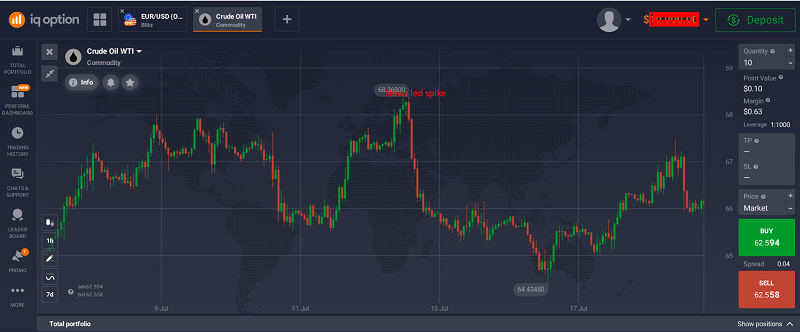
ETFs on IQ Option: Following the Crowd
ETFs (Exchange Traded Funds) behave like stocks. If you trade the S&P 500 ETF (SPY), it moves when Wall Street is open. Same for European or Asian ETFs.
I once traded the S&P ETF at midnight my time, only to realise the US market was shut. The price barely moved until hours later. When I switched to trading during the US open, my results improved immediately.
The golden rule: ETFs are tied to their native stock market hours. Trade them outside of that, and you’re just waiting for someone else to wake up. Before trading high volume, review account safety protocols.
My Win/Loss Examples That Proved Timing Matters
To show you how much timing changes the game, here’s a comparison from my trading journal:
- Bad Timing: EUR/USD trade at 3 AM local time (Asian hours). Result: sideways market, lost $50.
- Good Timing: Same pair during London–New York overlap. Result: strong breakout, profit $120.
- Bad Timing: Bitcoin trade on Saturday evening. Result: chop, loss $30.
- Good Timing: Bitcoin during Monday afternoon (Wall Street open). Result: trend move, profit $90.
Over three months, simply shifting my trading to the right hours increased my overall win rate by 22%. That’s without changing strategies or indicators, just the clock. Time zones differ, here’s how I trade in Pakistan, India, and Nigeria.
Quick Recap of Best Times (Without Overcomplicating It)
- Forex: London + New York overlap
- Stocks: Native exchange hours
- Crypto: Weekdays, overlapping stock hours
- Commodities: London + US hours, especially during data releases
- ETFs: Same as stock market hours
- Try combining RSI divergence with time filters.
But remember, these are not rigid rules. The best time for you depends on your lifestyle, too. I know traders who thrive in the Asian session simply because they focus on JPY pairs.
Final Thoughts: Time Is a Strategy
IQ Option gives us access to multiple assets, but if you don’t respect the clock, you’ll always feel like you’re trading blind. For me, the breakthrough came when I treated timing as part of my strategy, not just an afterthought.
If you’re still guessing when to trade, try this: pick one asset, trade it only during its prime hours for a week, and compare your results. You’ll see the difference.
Ready to test this yourself? Open your IQ Option account, choose your preferred asset, and align it with the best session. Timing could be the simplest edge you’ve been missing.